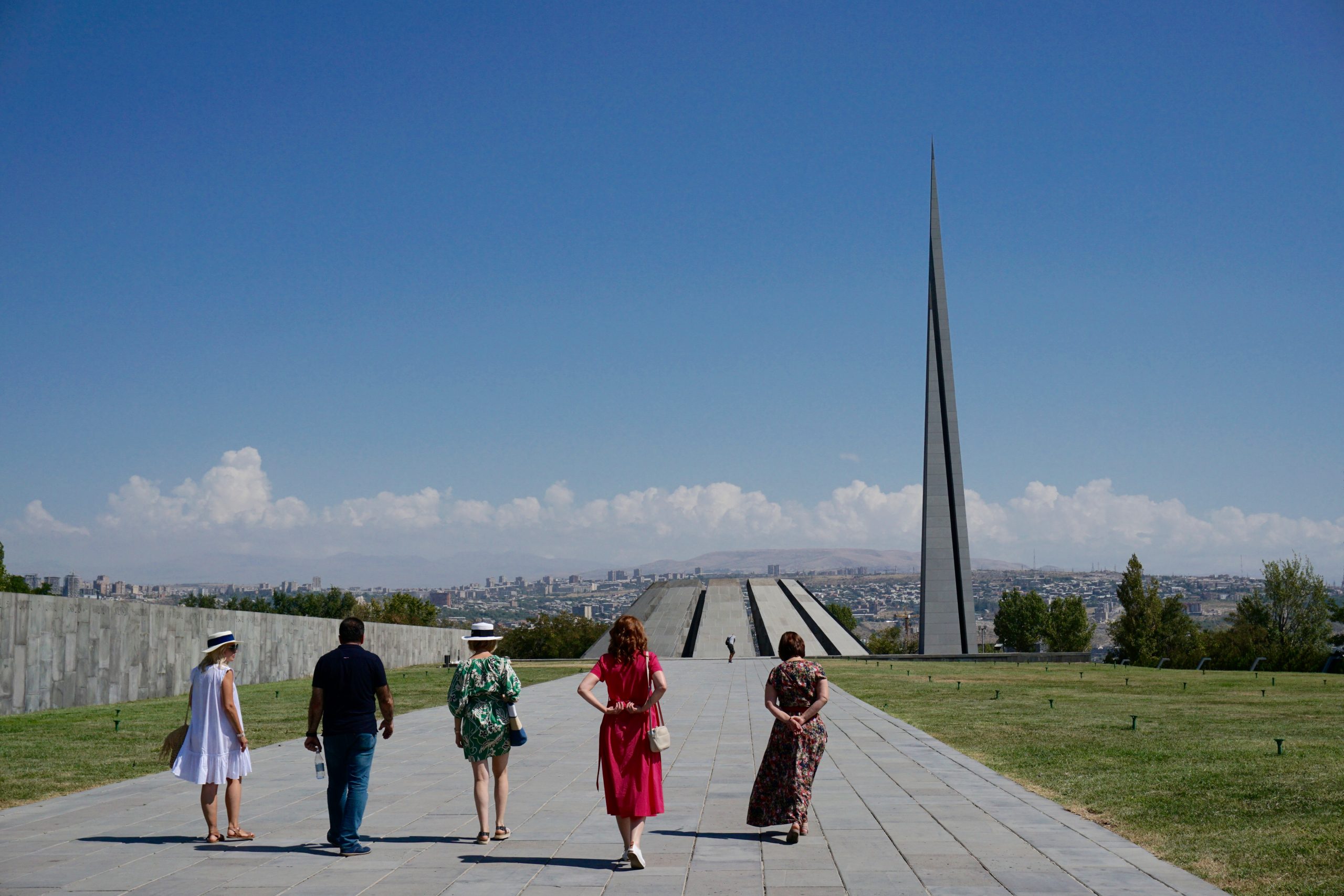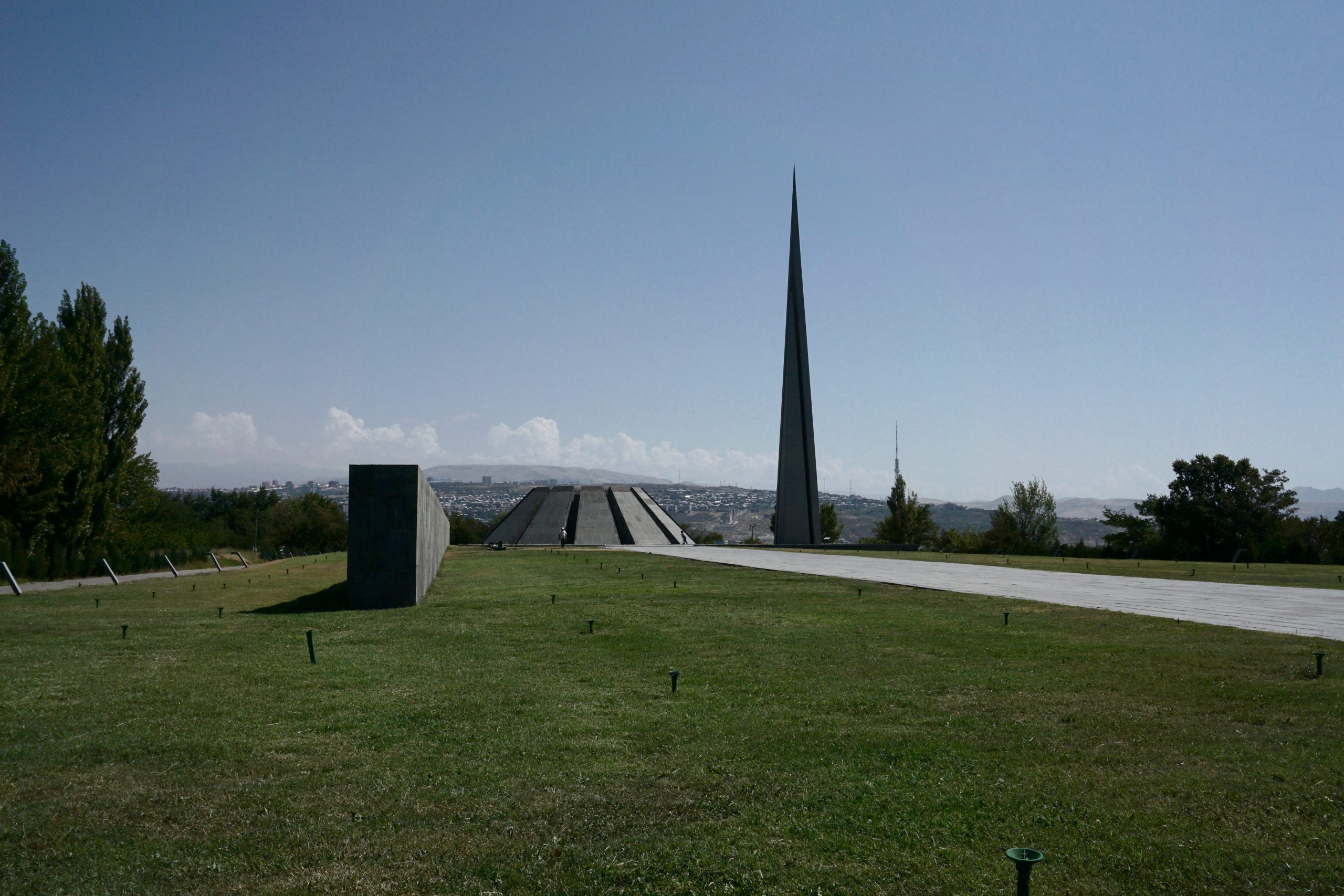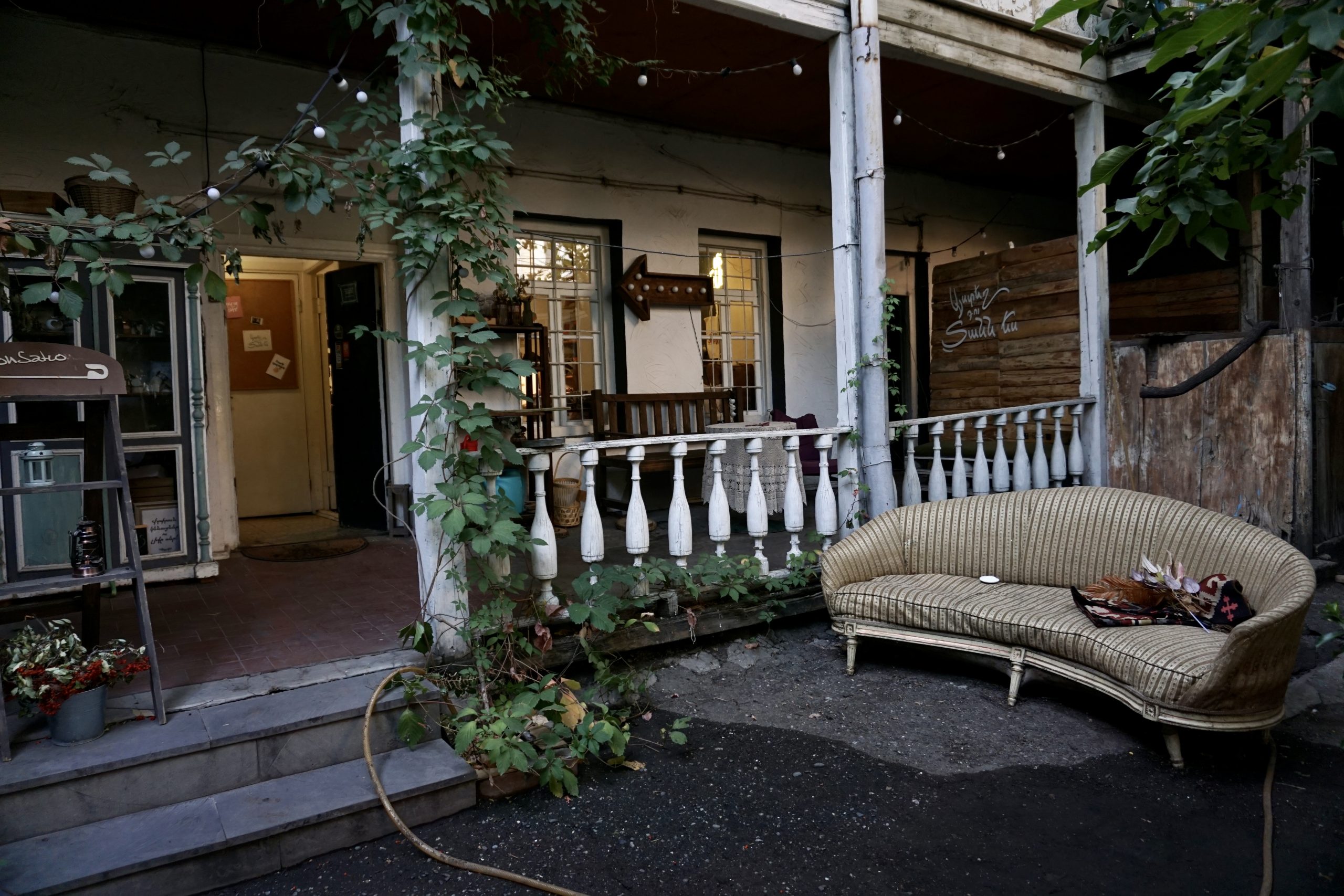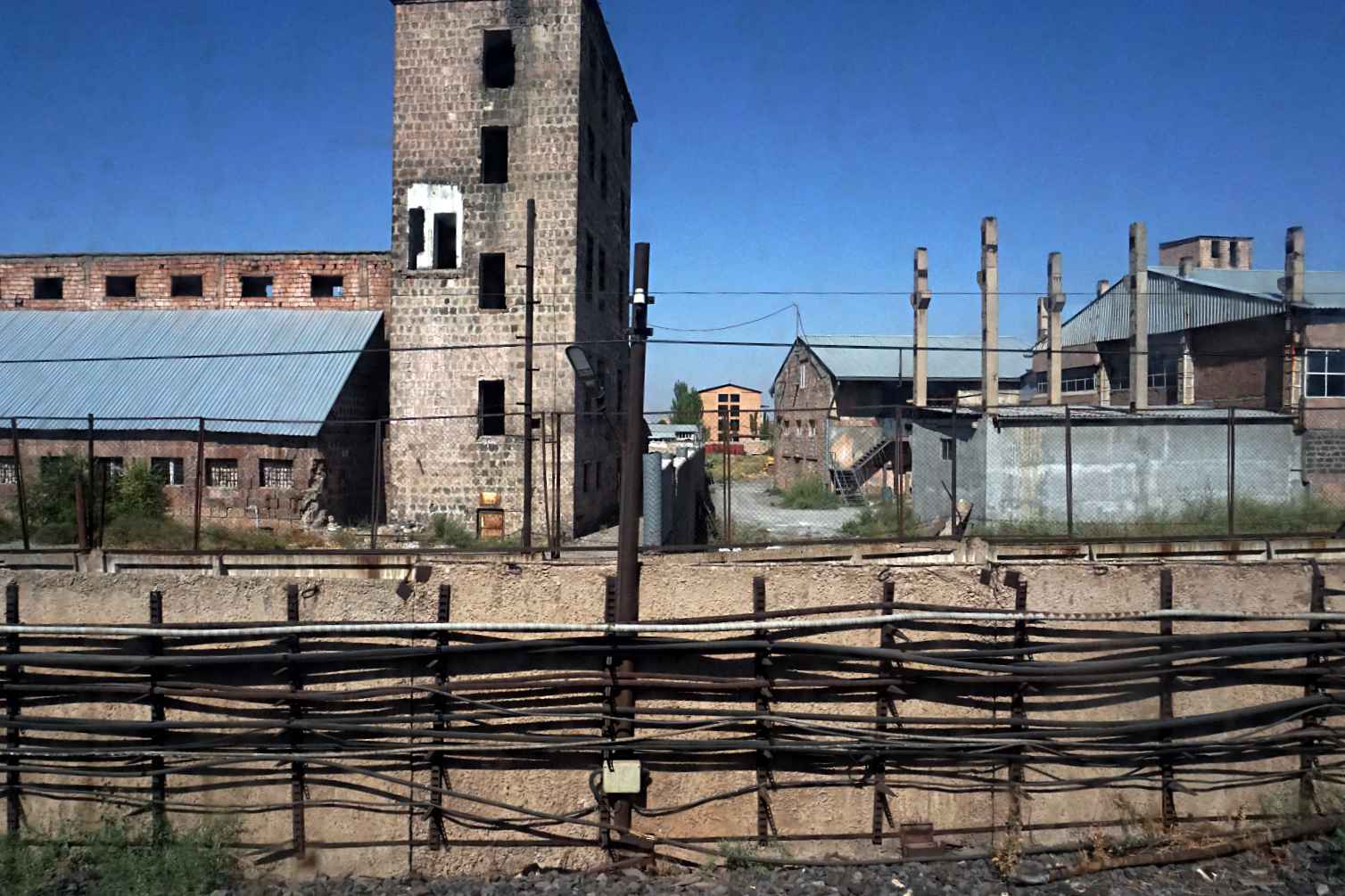Yerevan – a little history
15.09.2021 – No. 2
I used my first day in Yerevan for information and travel organisation and first impressions, the second for education. However, I got a bit too stuffed with it and can’t quite get it sorted, so I’ll have to make up for it at home.
Armenia is currently far too small a country in far too interesting a location with far too violent a history.
How much did you know about the genocide? I only knew that one took place and that Turkey interprets it differently, but that’s all. There is a memorial and a museum here, so I went there. When I came back out, I was pretty emotionally drained. Why is “man” so vicious with his fellow species? ????
Here’s a picture of the monument, the museum is underground in the complex and free of charge.
 The Memorial
The Memorial
What I learned, among other things:
- Many Armenians lived in a very large part of what is now Eastern Turkey. They were Christian, the Ottomans were not. They lived with or next to each other, went about their business (the Armenians were somewhat more successful) and put some obstacles in the way of the Armenian minority (they were not the majority in any district), such as higher taxes.
- In the 19th century, the Ottoman Empire wanted to expand further and further and had the idea that the minorities were an obstacle to this.
so some of them were killed from time to time. They liked to pose with the chopped-off heads in their hands. - there was an Armenian resistance that reacted with some kind of terrorist acts. Turkey interprets this the other way round.
- There was a movement of Young Turks against the old ruler at that time. They were supported by the Armenians at that time – only that they realised shortly afterwards that they were out of the frying pan and into the fire. The Young Turks were after killings even more.
- In 1915, the leading figures (thinkers, church leaders, politicians – almost exclusively male) were killed, which made the internal organisation of the Armenian population enormously difficult. Actually, they could now do what they wanted with them, i.e. kill them directly (even ordinary citizens were more likely to be supported in this) or deport them through the desert on the assumption that masses would die in the process. And they did. The aim was extermination.
- Turkey says: that’s not true, they were war measures (World War 1 had just taken place).
- Many children were forcibly Islamised. Many were picked up as orphans by compassionate others and saved.
- The figures vary between 300,000 and 1.5 million people perished.
So this is a very rough summary, in which there may also be errors. There was a lot of visual material and actually good explanations. Only my legs had trouble with all the standing and my head with absorbing all the information. But I will certainly look into it further, so that I can then reproduce it better.
 Again the memorial
Again the memorial
Unfortunately, I had to hurry because I had signed up for a foot tour. It was “free”, i.e. you paid as much tip as you think it was worth.
We were 2 German guys, a Greek woman and me – and our guide Tigran. He told us much more about the history of Armenia before the genocide up to the present situation. But that is too much to repeat now. He also showed us some remnants of the old town. I would never have found them on my own. There seem to have been super nice buildings once, mostly made of wood. Which was considered better for the climate and not – as I suspected – because of the earthquakes. Armenia still suffers from that sometimes.
 Remnants of Old Town
Remnants of Old TownI think I will write about it again in more detail. Today I filled my head even more with the current situation. Armenia is a very small country with enemies on the left and right (Turkey and Azerbaijan) and more neutral states above and below (Georgia and Iran). Nagorno Karabakh has at least a 90% Armenian population, which Azerbaijan once conquered. Now both want it – also to consolidate their position. Azerbaijan and Turkey would also like a direct passage to trade. Now really small Armenia sits in between, is not quite perceived and supported by the rest of the world as much as they would like to be, and is trying to just stick around and live a slightly better life.
It used to belong to the Soviets, who built up a lot, but then disappeared again. A lot of the economy disappeared with it – it’s fascinating how many empty factories there are here.
 abandoned factory
abandoned factory
I think I’ll leave it here for now – more will come in my Yerevan posts from the 2nd visit. The next post will be about trekking in the province of Vajots Dzor!
